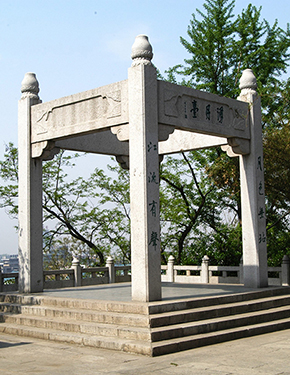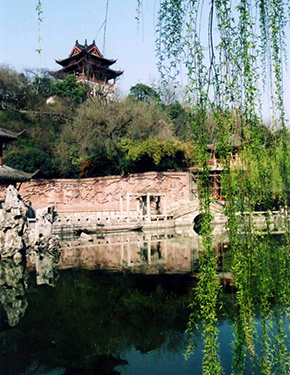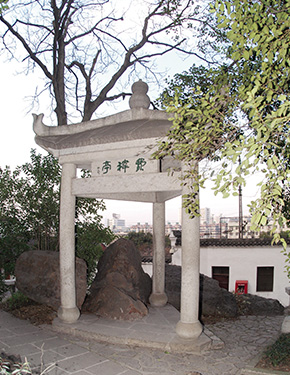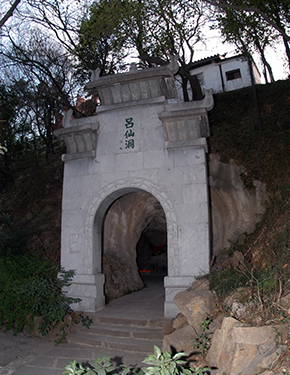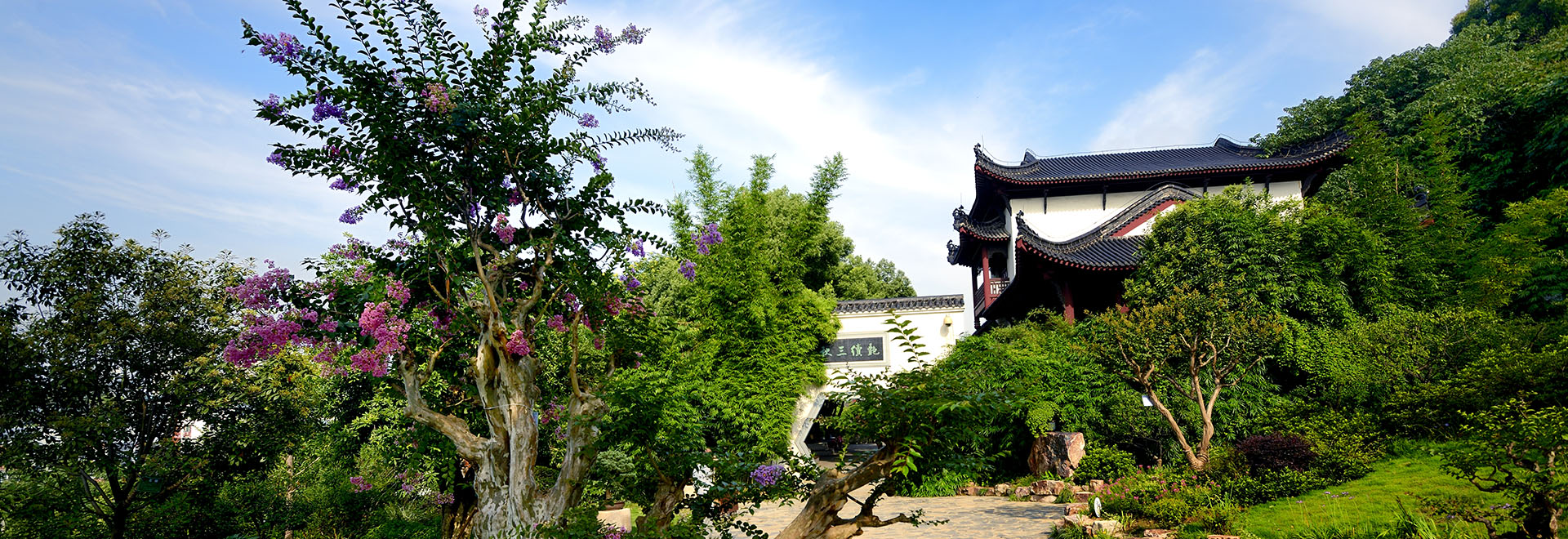
Rock Mirror Pavilion
- Nomal
- Enlarge
- Reduce
This pavilion sits within the Northern Section of the park. It is 150 m northeast of Yellow Crane Tower, 134 m northwest of White Cloud Pavilion and 50 m east of Cave of Immortal Lü.
Its construction dates back to Song Era. As recorded in history, a dark rock stood at the cliff below Yellow Crane Tower in the early Northern Song Epoch. This rock was as smooth as a mirror. Each time the sun was setting, it would glint bright like a mirror. Then a pavilion was erected beside the rock and named in this way. Song poet He Zhu sang of it in his poem, “In the east of the city stands a rock opposite to the setting sun. The mountain is divided into two halves by the rock, like two eyebrows of a sheer giant.” At that time, Rock Mirror Pavilion lay on the piedmont. Yellow Crane Tower was sandwiched between this pavilion and South Tower. Lu You said in My Journey to Shu, “I come to ascend Rock Mirror Pavilion and visit the old site of Yellow Crane Tower. The pavilion stands on a corner of Shicheng Mountain (now Snake Mountain). Leaning against the Yangtze River, this pavilion faces Hanyang across the river. So, gaze west and you can get a panorama of all the town’s men, grasses and trees. Legend says Lu You visited the so-called mirror, only to find that it was but a common rock variegated in yellow and brown. It could not serve as a mirror anymore. As a result, Lu You “dismissed its fame as being far from well-earned.” Some one of Ming Dynasty even inscribed Immortal Lü’s poem on the pavilion wall. Ming scholar-official Fang Xiaoru included this pavilion in Preface to Scrolls of Wuchang’s Top 10 Views. Yin Dongjiao and Ren Jiaxiang, another two Ming scholars, left this place with their lines, “As Celestial Rock sits near, wild flowers refresh my soul; when Rock Mirror Rock comes in reach, the elegant flute plays another tune.” “I come to Xuandu Temple again when peaches have been planted; I once toured Rock Mirror whose location is not far off now.” In the 16th Year (1643) of Chongzhen Period, the rock suddenly got lost; later the pavilion was ruined too. In the 43rd Year (1704) of Qing’s Kangxi Period, Governor of Huguang Yu Chenglong and Inspector-General Liu Dianheng rebuilt the pavilion. But it could be found nowhere in Jiaqing Period.
In 1993, the pavilion was built once more against a rock. This pavilion is in fact a 2-column half-square granite of 3.59 m length, 1.59 m depth and 5.12 m height. On the wall is inlaid a black sandstone as the mirror. It indeed sets down in a tranquil getaway of sparse woods and grotesque rocks. This quaint edifice boasts the name inscription by Fan Niu (Tian Yuan) Secretary-General of Jiangsu Calligraphers Association.
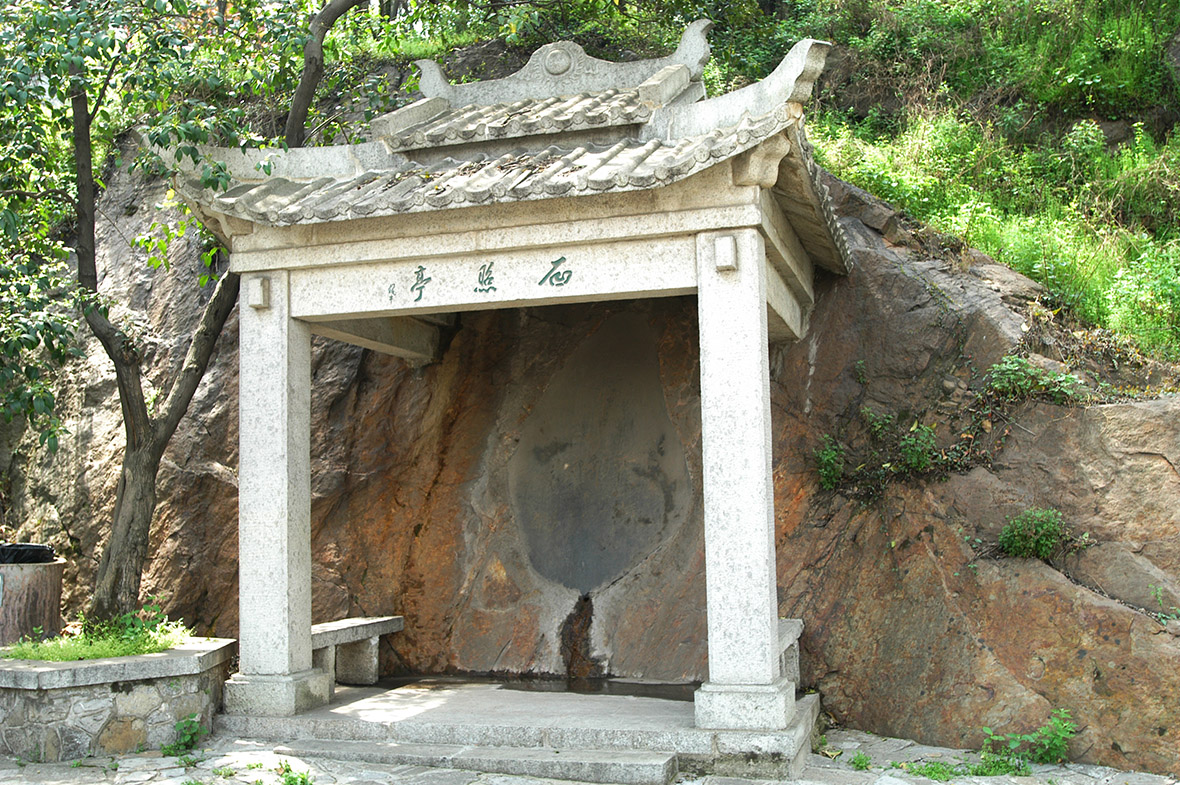
Tourist Service
- consulting hotline
Service hotline: 027-88875096
Supervision hotline: 027-88848188
027-12301
(Wuhan Tourism Bureau.)
027-87124701
(Hubei Tourism Administration)
- Official qr code.

Scan focuses on the yellow crane tower.
- Online consultant
- Complaint and advice

